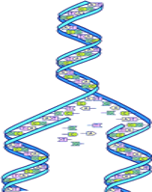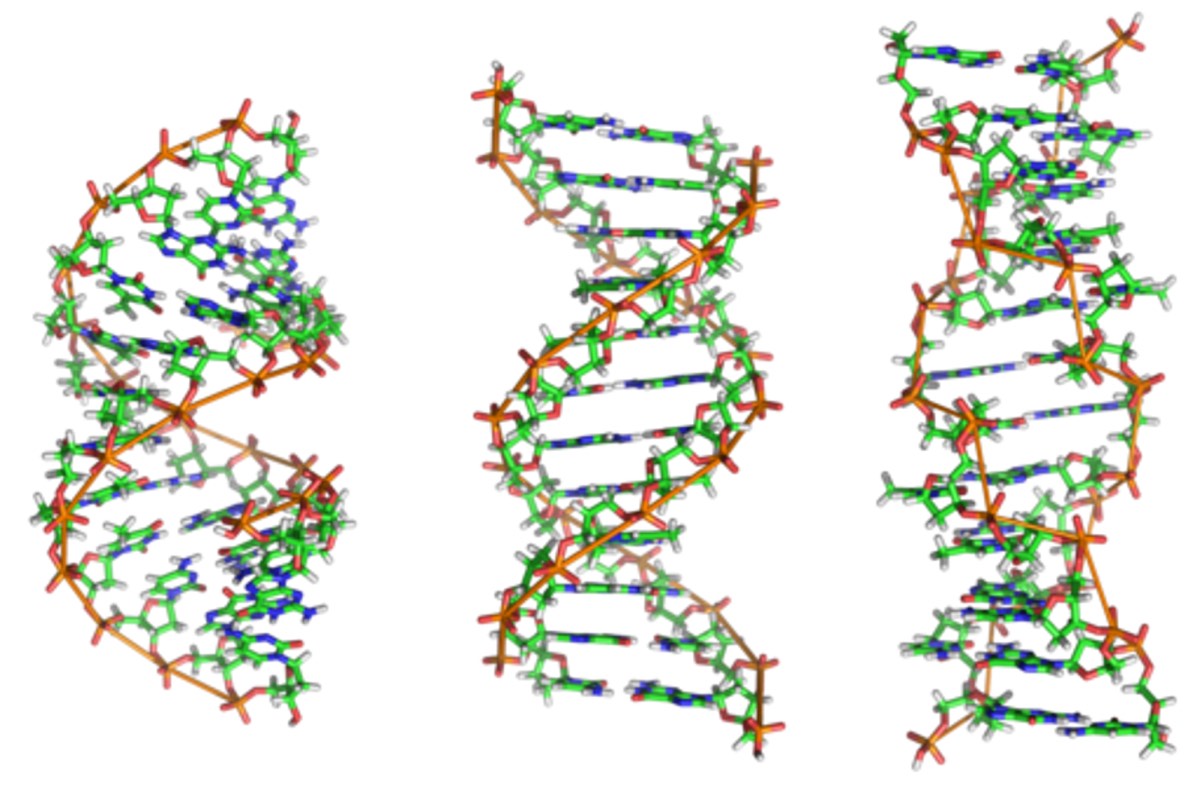A Lesson in the Law of Unintended Consequences.
Understanding of DNA from 1955 to 2012
 Spit in a tube and learn your risk of future diseases from your DNA? No, you won’t.
Spit in a tube and learn your risk of future diseases from your DNA? No, you won’t.
Murky heritage
Spit in a tube and learn your heritage? I am an Ashkenazi Jew from Russia, except, according to 23 and Me, I am 1% Asian and don’t think so. My ninety-pound rescue dog is 1% chihuahua. There is always another chihuahua in the genetic woodshed. Geneticists call the heritage conclusions superficial. That’s why there are genealogists. That is why DNA expert witnesses always talk about odds, not a certainty.
Ethical concerns
Spit in a tube and discover new relatives? Your birth parents, sperm donors, orphans, and siblings like a Victorian novel on steroids… Do I want them to call me? No. Do I want to fill in my family tree? No. There might be a good reason my parents or siblings never discussed their peccadillos, resulting in unnamed relatives. Was there a drunken debauch, an underage pregnancy resulting in adoption, or worse — criminal acts like rape or sex trafficking?
The law
Spit in a tube and learn the legal implications – new siblings can claim shares of wills, trusts, and estates.
Murder too?
Genetic genealogists can identify a criminal by combining DNA strands from the criminal’s relatives. They combine DNA strands to piece together a match sufficient to get a search warrant. If your newly discovered sibling/parent/child is a heavy-weight criminal, law enforcement may wish to question you.
An example is the Golden State Killer. Law enforcement suspected James Deangelo of multiple rapes and murders over forty years but lacked evidence. Detectives identified relatives of DeAngelo — as far back as his great-great-great-great grandfather. They built his family tree — it contained 1,000 people. It convinced the court to grant the long-sought warrant and subsequent arrest.
FDA concerns
In 2013, the FDA sent a warning letter to 23 and Me to “‘immediately discontinue’ selling its saliva-collection tests after failing to provide information to back its marketing claims. The tests claim to show how personal genetic codes may affect the increased risk of specific diseases and sensitivities to certain medications.”
Science had left 23 and Me in the dust. The company adopted the state-of-the-art technology that was available in 2004. By 2013, our understanding had leaped forward, and 23 and Me could not adopt the expensive new technologies required. In 2004, DNA analysis could only identify several hundred spot mutations. A strand of DNA is three billion codons along the double-stranded string; if laid flat, it would be six feet long. In 2012, 40 codons were associated with heart disease. By 2014, the number was 4000. The FDA claimed that 23 and Me, still based its predictions on the 40 codon solutions, was overstating its conclusions, was true.
The remedy was to change the marketing materials. They now insist that customers review educational tutorials about frightening test results such as Alzheimer’s or Parkinson’s diseases before 23 and Me releases the result.
In 2016, three friends and I registered with 23 and me. We were surprised that our reports concluded we all shared the highest risk for venous thromboembolism, and none of us ever had one, nor did our parents or grandparents. Ditto for the drug sensitivities.
So, if 23 and Me has no diagnostic or therapeutic implications, is it just a parlor game? Read on.
23 and Me privacy statement:
“We will never share your genetic or self-reported data with employers, insurance companies, public databases, or 3rd party marketers without your explicit consent. We give you full control to decide how your information is used and with whom it is shared.”
While they stated they would not share your information with a list of multiple specific industries, they cleverly left out mention of pharmaceutical firms. 23 and Me is gathering data for a human genetic data bank, and your genetic data belongs to 23 and Me. Glaxo Smith Kline has invested $350 million in 23 and Me, and other pharma firms bring the total to a nifty 850 million dollars.
A spokesperson from 23 and Me told the Guardian newspaper that all its DNA samples were processed in the US and did not share customer data with any third parties “without the separate, explicit consent of the customer.” I don’t recall being asked to share my data with Genentech or the Michael J Fox Foundation.
A private company has your most personal information and promises everything will be okay. What could go wrong? Think of Facebook.
A Simulation of DNA in Action, 2020

The 2020 Version of DNA in Action – Wikimedia
Studies of Identical Twins
For more than 100 years, studies of identical twins have shown that identical twins are not identical. Looking at whole genome sequencing of identical twins shows, on average, a difference of between five to one-hundred mutations. Let’s take the classical view of evolution. Mutations are passed from one generation to the next, accumulating as the survival of the fittest dominates the gene pool over hundreds of generations.
Identical Twins Don’t Have Identical Clinical Outcomes
Three-quarters of identical twins do not share an autoimmune disease (conditions like lupus and rheumatoid arthritis); only one of the twins is affected. This is known as “disease discordance,” meaning that one twin has a disease while the other does not. This applies to multiple conditions, including hemophilia, multiple sclerosis, and Duchenne muscular dystrophy. At our present level of gene sequencing, we have identified other influences that 23 and Me can’t account for, which is why my friends and I were all considered at high risk for diseases we will never get.
Methylation
23 and Me methodology is the equivalent of a snapshot of DNA stretched out flat as a single strand. DNA does not behave as a single string. Instead, it is a rapidly spinning ball of twine, where numerous double-helix strands unzip in proximity to other strands in three dimensions to create the proteins that make our bodies function. Supercomputers cannot simulate this process.
Further, we have identified mutagens and epigenetic attachments that alter DNA function. Mutagens include radiation, chemicals, and pollutants. Whichever twin has more exposure will have more mutations. The most potent barrier to mutagens in our food is likely our microbiome. Identical twins are born with microbiomes similar to their mothers. However, within weeks, the microbiomes of twins differentiate. One twin may grow skinny and the other obese; when tested, their microbiomes are very different.
Epigenetic markers attach themselves to the spine of the double helix. These small methyl groups affect the rate and location at which DNA can unzip the double helix and begin making proteins. Epigenetic markers do not have a reproducible attachment pattern from one human being to another, but some epigenetic markers can pass to the next generation.
You are not just your genes
Epigenetic markers change DNA function during the recipient’s lifetime, and many epigenetic markers pass to the next generation. The implication is that altering our DNA function during our lifespan results in one lifetime rather than hundreds of lifespans in classical evolution. These sudden changes in biology were labeled as “punctuated equilibrium.”
We do not have the power to predict with any precision, or relative odds, even the commonest of diseases. I marvel at the hubris of 23 and Me to charge you money, take possession of your DNA data, provide reports of questionable certainty and weighty legal consequences while receiving millions from pharmaceutical firms.

